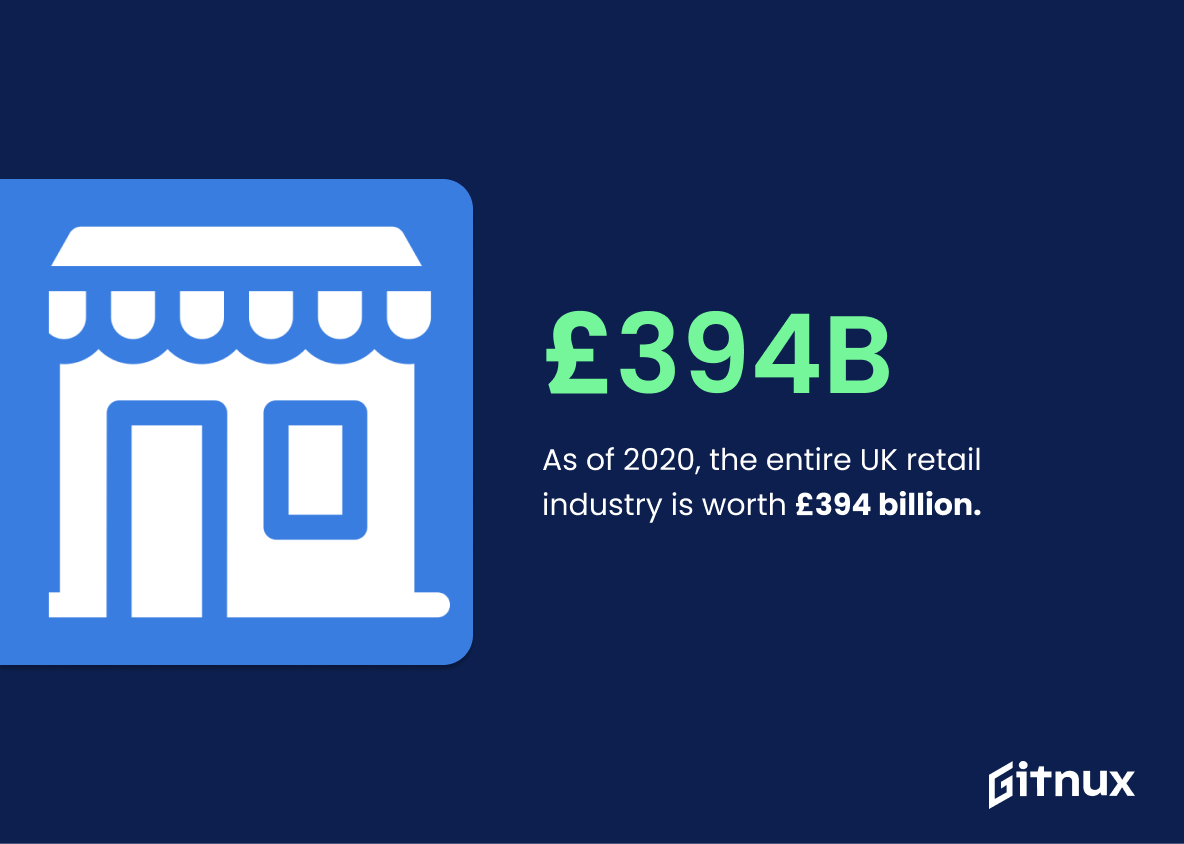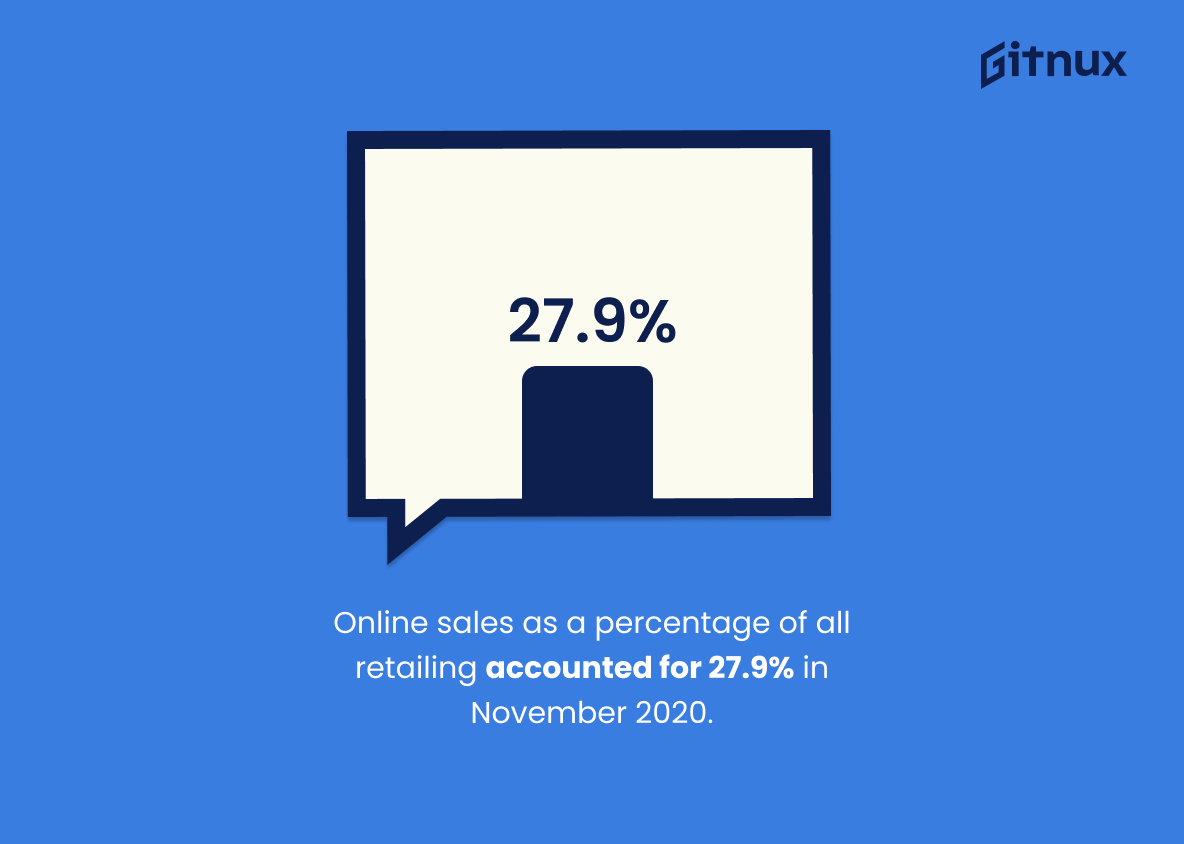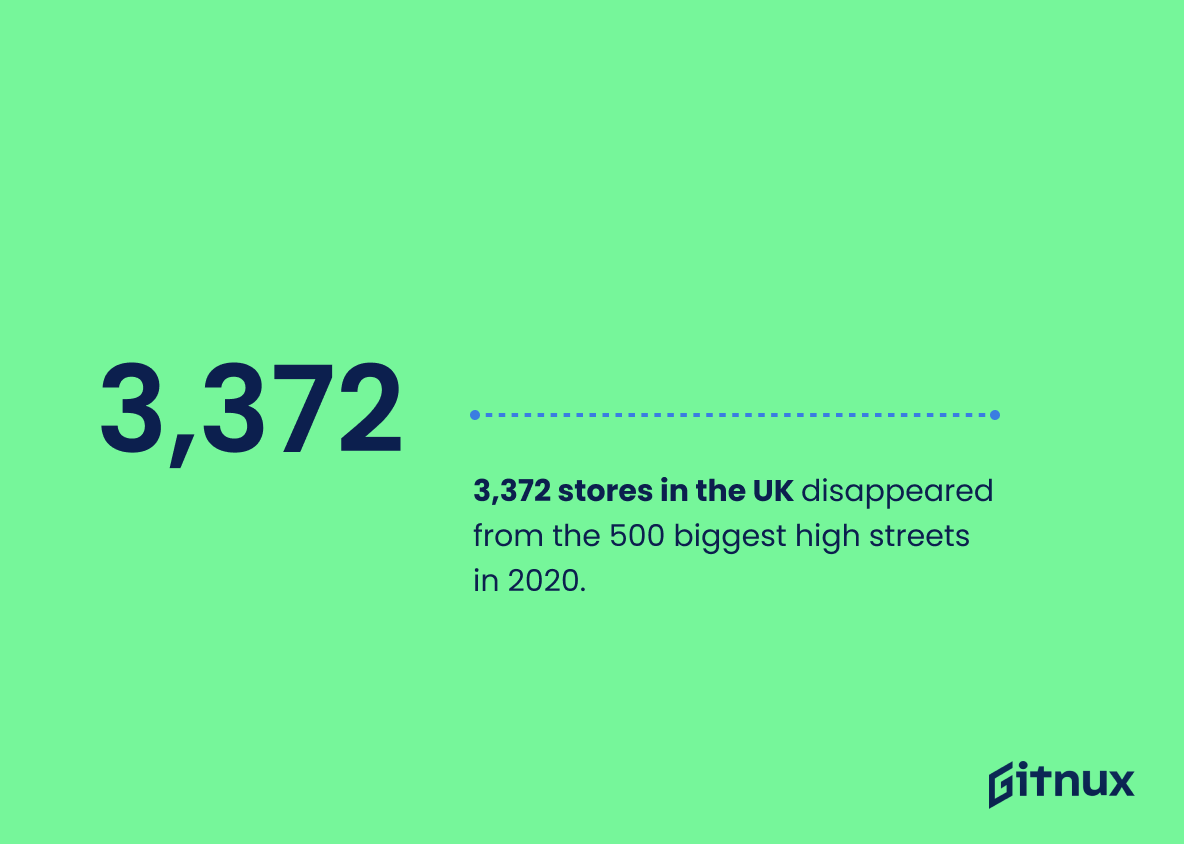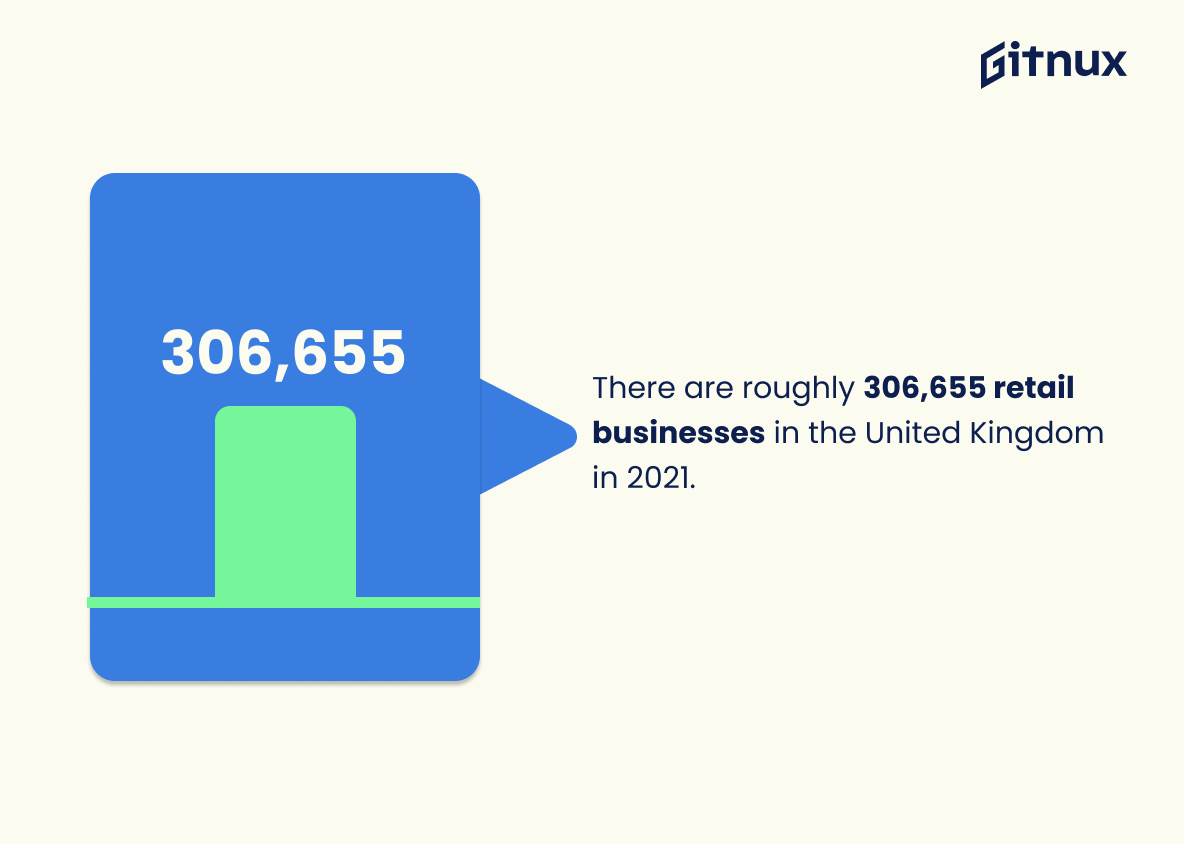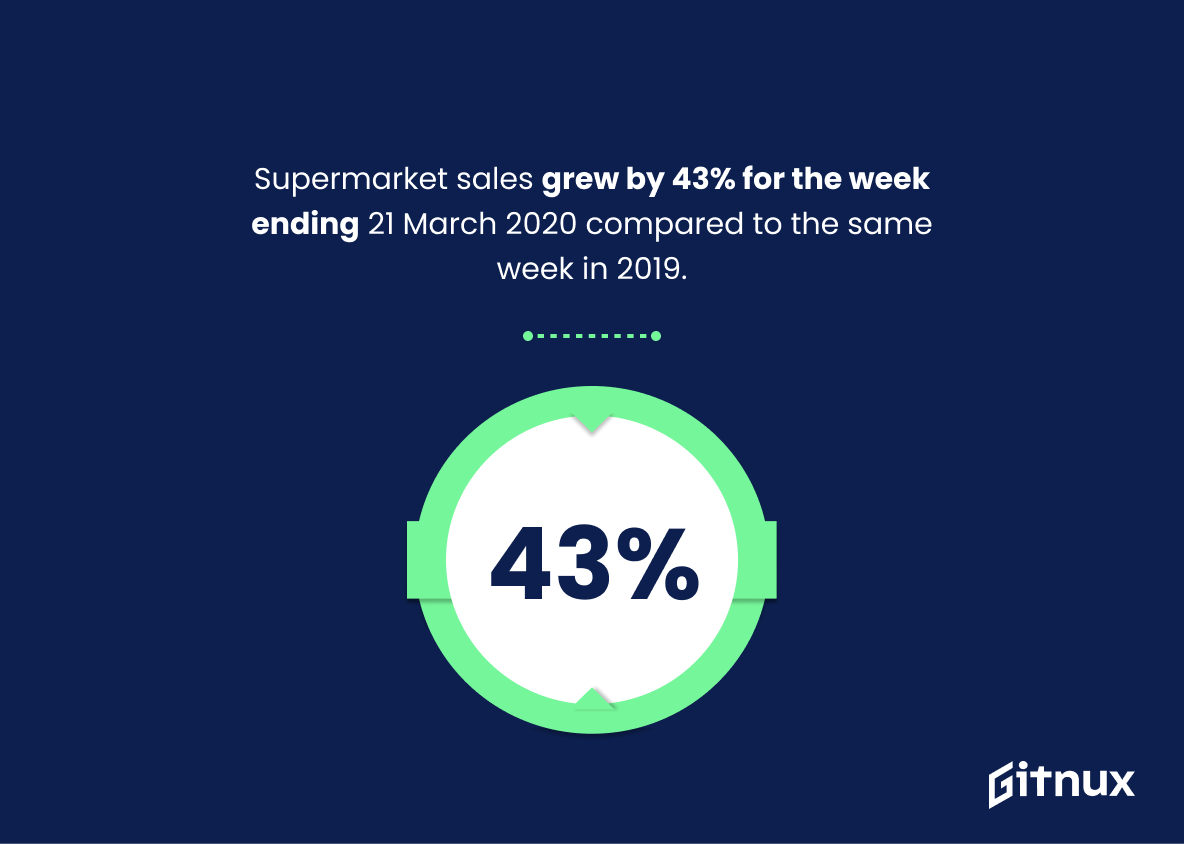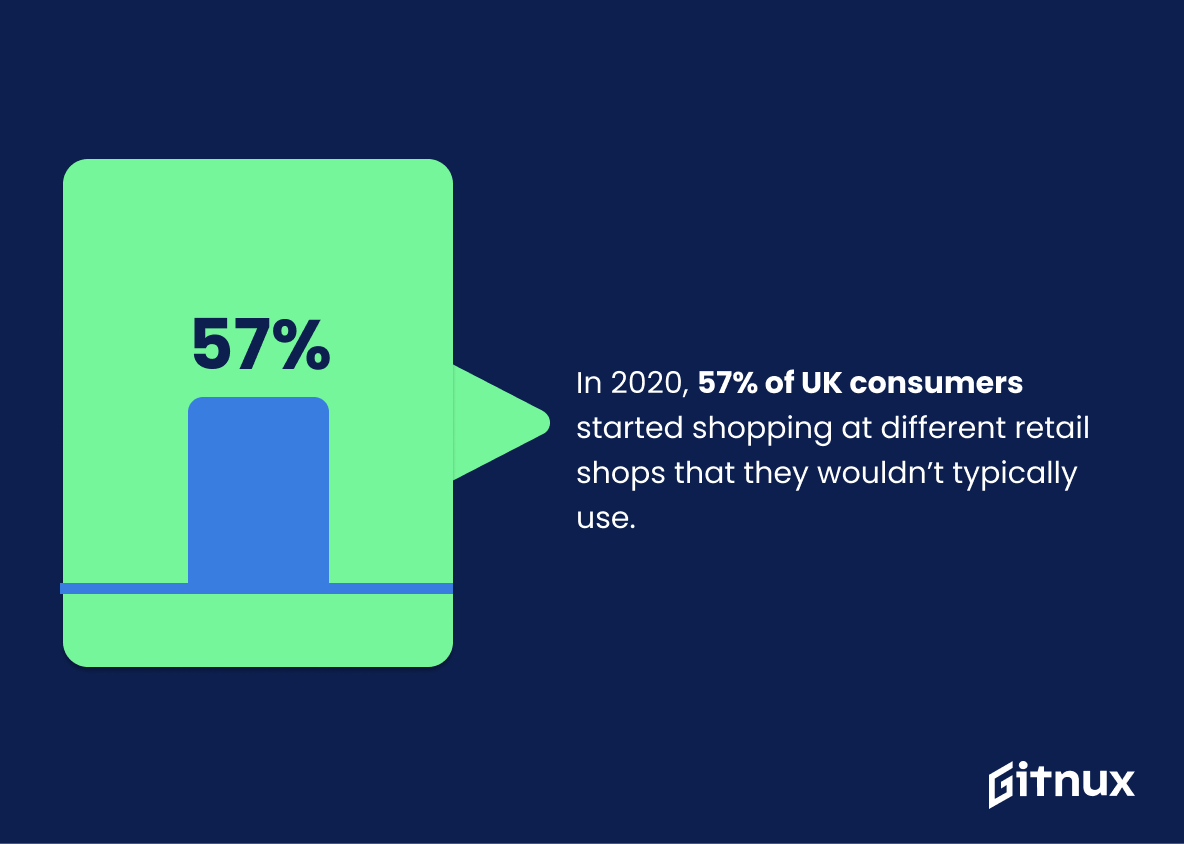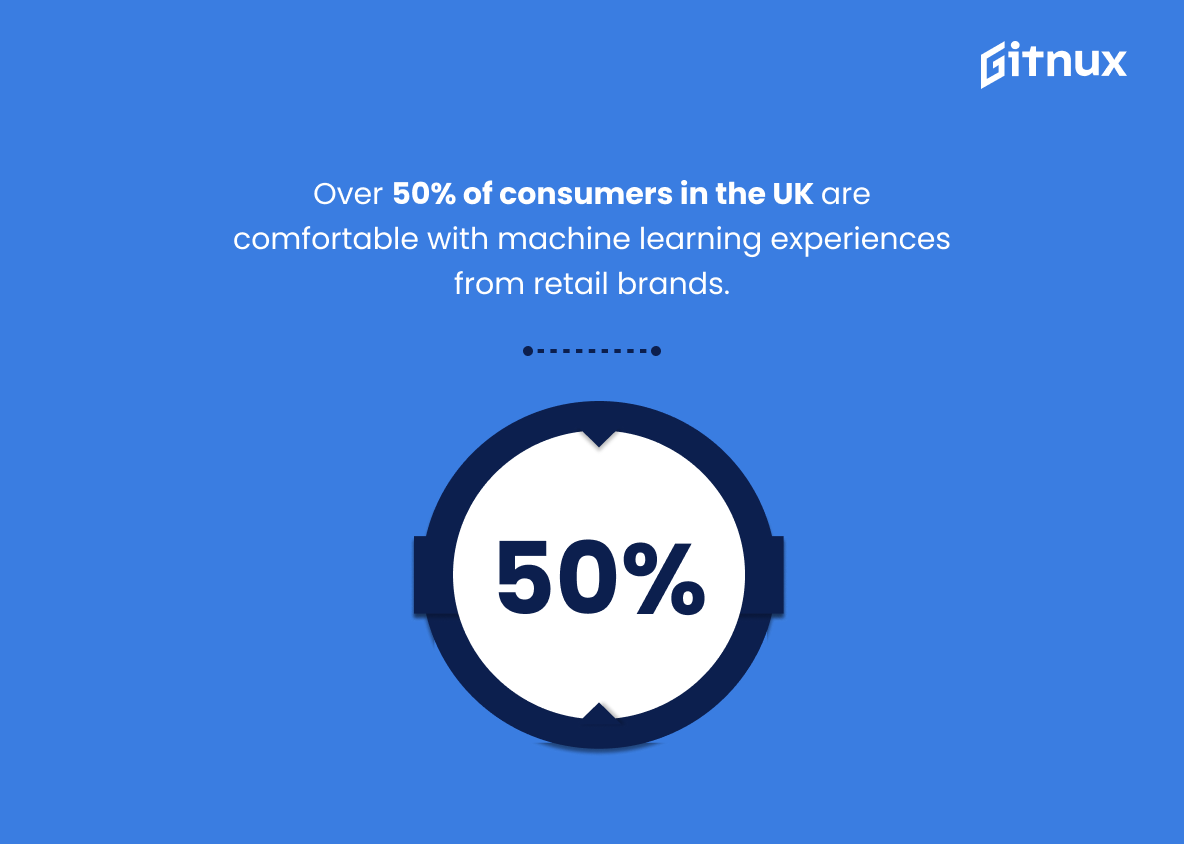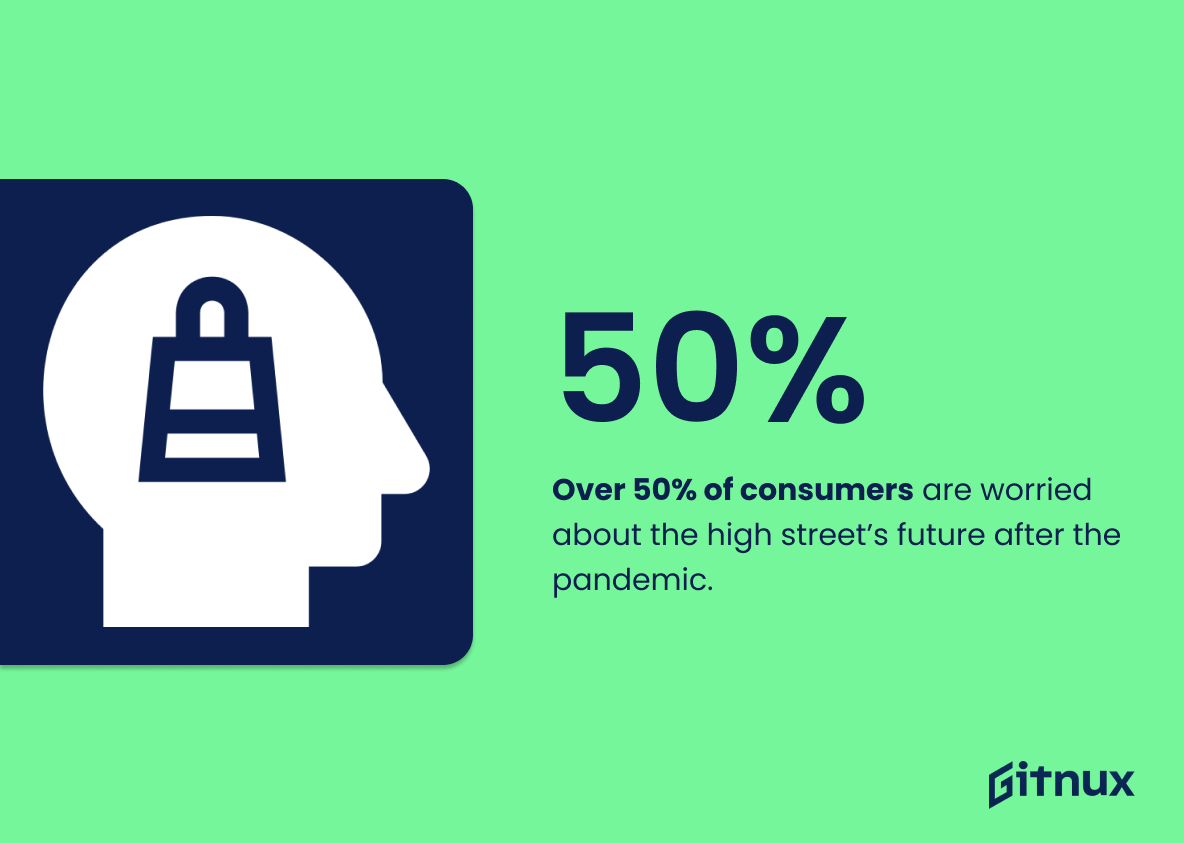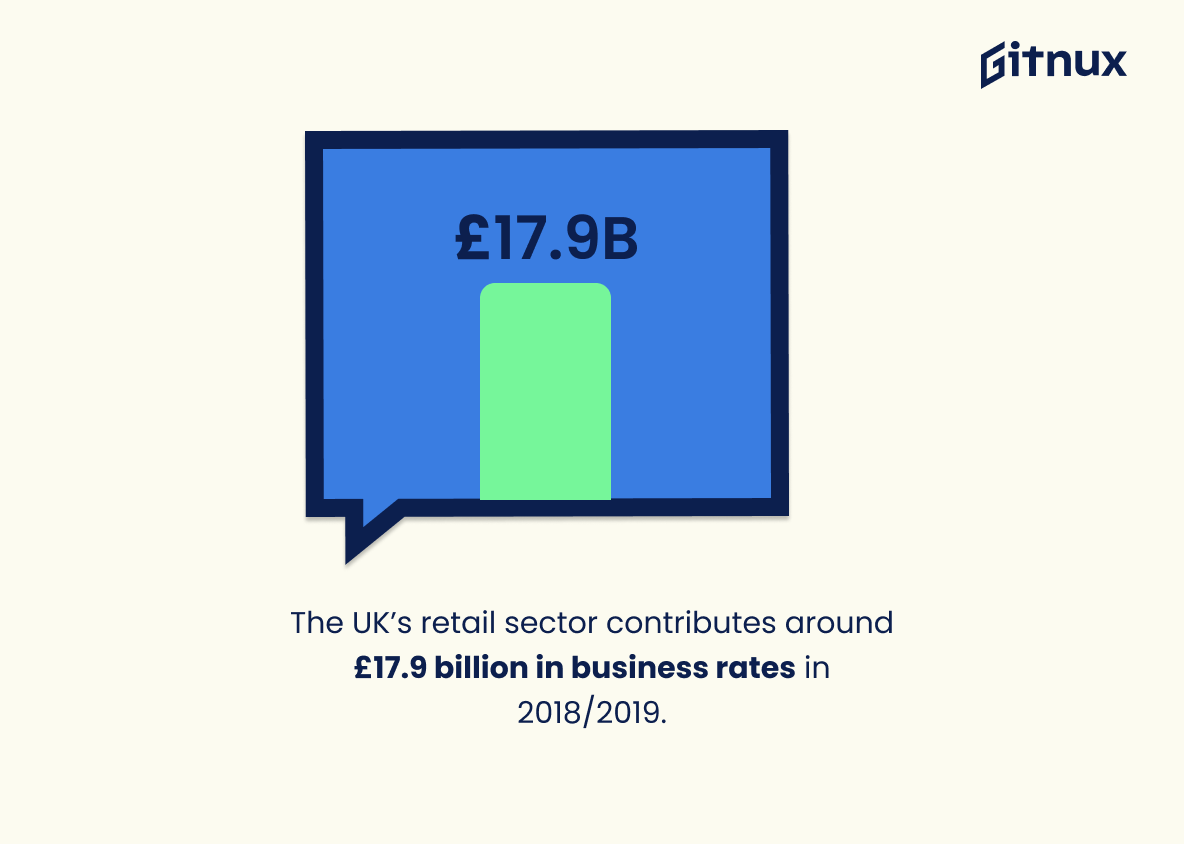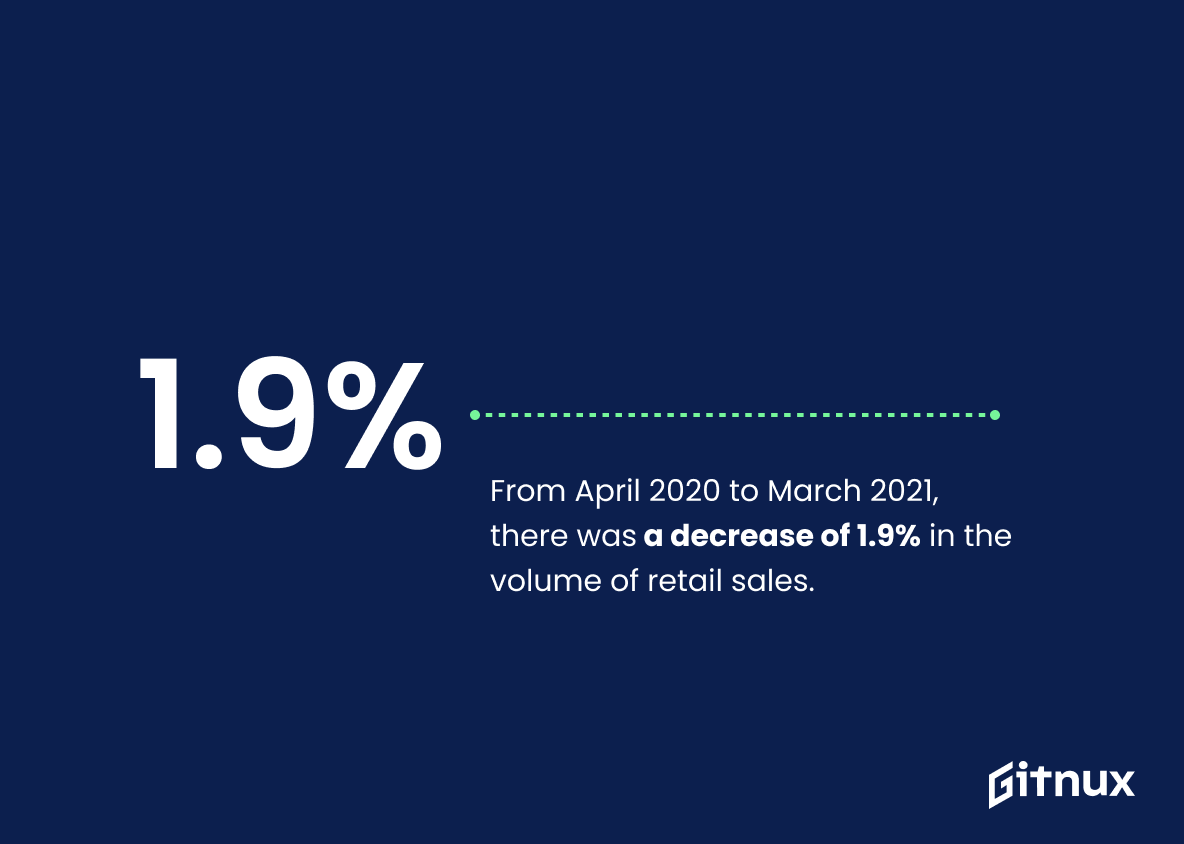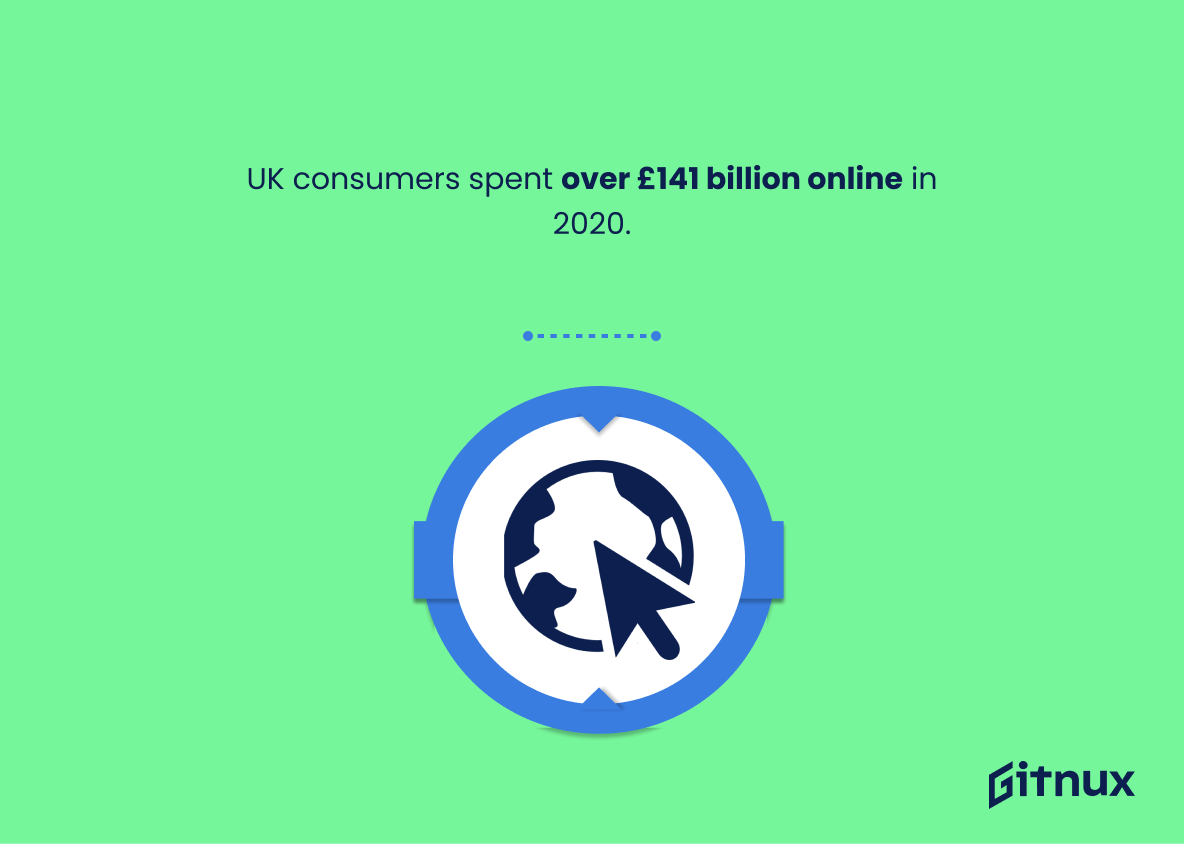Navigating the ever-evolving landscape of the UK’s Retail Industry requires a solid grasp of the latest trends, shifts, and statistics. As we plunge deeper into the digital age, these metrics become increasingly crucial, shaping the strategic decisions of retailers across the nation. This blog post will uncover a wealth of fascinating and instructive UK Retail Industry statistics, offering valuable, data-driven insight into the sector’s current standing and future potential. From high street favourites to ecommerce powerhouses, let’s take a closer look at the numbers painting the vibrant scene of the UK Retail Industry. Don’t miss out on this opportunity to fine-tune your strategies and set your business up for long-term success.
The Latest Uk Retail Industry Statistics Unveiled
As of 2020, the entire UK retail industry is worth £394 billion.
In painting the grandeur of the UK’s retail landscape, one cannot sidestep the monumental £394 billion value tag linked to it as of 2020. This towering figure serves as a lighthouse, illuminating the scale and potential of the UK retail sector, and is crucial to fully comprehend the sector’s economic footprint. When embedded in a blog post about UK Retail Industry Statistics, this figure effortlessly transcends mere numbers, captivating the reader’s interest and relay the story of the industry’s economic prowess, contribution to national GDP, and influence in the global retail market. It sets the stage for further data analysis, industry trends, and future forecasting, allowing readers to contextualize the information and engage more deeply with the content.
Online sales as a percentage of all retailing accounted for 27.9% in November 2020.
In the realm of the retail industry in the UK, weaving together the threads of statistics lead us to intriguing insights. The fact that online sales were responsible for 27.9% of all retailing in November 2020 paints a compelling picture of shifting consumer behaviour. This data point erects a signpost that highlights the continuous journey of e-commerce, marking its ascent as an increasingly preferred mode of shopping. This trend is particularly momentous within the unfolding narrative of retail, as it underscores the growing significance of online shopping, thereby offering valuable foresights for retailers about the changing landscapes and future directions of the retail industry.
3,372 stores in the UK disappeared from the 500 biggest high streets in 2020.
This figure paints a profound image of the shifts in the UK retail landscape exacerbated by the disruptive year of 2020. These vacant storefronts, once bustling with activity, signify the retraction faced by traditional brick-and-mortar retail outlets. The decrease in physical shops not only reflects the toll of economic downturn and stringent lockdown measures, but also captures the relentless competition with E-commerce. This seismic change in shopping habit highlights the urgent need for the traditional retail sector to reimagine and revitalize their strategies. Thus, it’s not just a numeric detail, but a testimony to an era of transformation and adaptation in the UK retail industry.
There are roughly 306,655 retail businesses in the United Kingdom in 2021.
Highlighting that there are approximately 306,655 retail businesses in the United Kingdom in 2021 sets the stage for understanding the magnitude and vibrancy of the UK’s retail landscape. It serves as a testament to the retail sector’s vitality, diversity, and potential for economic contribution. When we ground our discussion in the richness of this figure, we gain a valuable benchmark for comparisons, trends, impacts of policies, and the overall health of the retail industry. A vibrant repertoire of over 300,000 retail businesses paints an exciting picture of opportunities, challenges, and industry dynamism. It underscores the breadth of the competition, the scope for employment, and the level of contribution to the country’s economy. Therefore, this number becomes an essential cornerstone in our investigation and analysis of the UK Retail Industry.
Supermarket sales grew by 43% for the week ending 21 March 2020 compared to the same week in 2019.
Unveiling a whopping 43% growth in supermarket sales for the week ending 21st March 2020 versus the same week the previous year paints a vibrant picture of the UK retail industry’s dynamics. It emphasizes a radical shift in consumer behavior, potentially fueled by factors such as altered macroeconomic conditions or unusual consumer response to specific market events. More than just numbers in the financial ledger, this surge in sales illustrates the inherent flexibility and adaptiveness of the UK’s retail industry. In essence, this statistic is a spotlight illuminating the ever-evolving reality of retail, offering invaluable insights for those invested in this dynamic sphere.
The average weekly spending in the retail industry in June 2021 was £7.2 billion.
Unveiling the power of numbers, let’s take a look at the retail roller coaster in the UK. The golden figure of £7.2 billion, representing the average weekly spending, isn’t just a jumble of digits – it has its own story to tell. Each penny in those billions broadcasts the pulse of consumer behavior reflecting trends, habits, and spending capacity of the collective populace. This figure is essentially the heartbeat of the UK’s retail industry in June 2021. It serves as a compass directing businesses towards insightful strategies, a mirror revealing market dynamics, spark for economic analysts and a benchmark for future industry projections. Hence, it is pivotal to go beyond the surface, delve deeper and see beyond the £7.2 billion. The beauty of this numeric spectacle lies in its implications, packing invaluable secrets of economy and consumer landscape into its folds.
In 2020, there were 1.9 million employees in UK’s retail industry.
Highlighting the figure of 1.9 million employees in the UK’s retail industry during 2020 can be likened to staging a colossal human orchestra. Each player is essential, contributing towards an overall symphony that is the retail industry. This figure – a galaxy of professionals – helps us appreciate the scale, the labour force strength, and the multitude of livelihoods sustained by the retail industry. A cornerstone of the UK’s economy, its ebbs and flows, therefore, reverberate far and wide, impacting countless lives and households.
Up to 67% of consumers in the UK shop online.
Imagine sailing through a vast ocean that is the retail industry in the UK; the stat asserting that 67% of UK consumers shop online is our North Star guiding the journey. It’s a shout from the 21st century digital revolution, echoing across businesses urging for an online presence. This figure stands as a testament to the ongoing shift in consumer behavior, making it clear that the digital marketplace is no longer just an alternative, but rather necessary for survival.
Highlighting this significant consumer trend, it pitches online shopping as the vital lifeline in the ever-evolving retail landscape. A powerful pulse that retailers need to keep their fingers on, to stay alive and thrive. In the competitive world of UK retail, understanding this statistic means leaving the days of solely brick-and-mortar behind and opening the gateways to a destination frequented by 67% of your potential customers – the digital frontier.
In 2020, 57% of UK consumers started shopping at different retail shops that they wouldn’t typically use.
Significantly, this statistic underscores a shift in consumer behaviour within the UK retail industry, occurring amidst 2020’s unique circumstances. It demonstrates a readiness among UK consumers to venture away from their habitual retail preferences, thereby offering potential vistas of opportunities for alternative retailers. This evolution of consumer shopping tendency could be an essential indicator for retailers to strategize their marketing plans, highlighting the need to attract and retain new customers. Through this data’s lens, a market disruption becomes apparent, leading retail shops to rethink their competitiveness and value propositions in the ever-dynamic UK retail landscape.
Over 50% of consumers in the UK are comfortable with machine learning experiences from retail brands.
An examination of such a statistic offers compelling insights about the assimilation of machine learning technology in the UK retail landscape. With over half of the consumers demonstrating comfort with machine learning experiences from retail brands, it illuminates a thriving trend. It builds a narrative of modern consumer behaviour embracing automation in their shopping experiences. Hence, retail brands can strategically reposition their marketing and service delivery to leverage this acceptance. These numbers also foreshadow the potential growth and evolution of machine learning, which can revolutionize the level of personalization, efficiency and convenience in the retail sector. It underlines a seminal shift in consumer preferences, setting the stage for the future of retail in the UK.
Over 50% of consumers are worried about the high street’s future after the pandemic.
This statistic serves as a pulsating heartbeat, echoing the mounting concerns of more than half the consumer pool alarmed about the buoyancy of the high street post pandemic. It paints an imperative canvas of unease in the realm of the UK Retail Industry Statistics, hinting at a veiled threat to the traditional brick-and-mortar shopping experience, and the potential pivot towards digital commerce. Shedding light on this apprehension could act as a catalyst for reinvention and change, urging retailers to transform and adapt in order to appease alarm bells ringing in the minds of their customers. This statistic is a crystal ball, alerting retailers to prepare preemptively for a brave new world in the post-pandemic retail landscape.
The UK’s retail sector contributes around £17.9 billion in business rates in 2018/2019.
The intricately woven fabric of UK’s economy resonates with the chime of £17.9 billion in business rates birthed by the retail sector in the 2018/2019 period. Such an imposing figure not only manifests the retail industry’s fiscal dimensions, but also paints a vivid portrait of the industry’s role as a substantial contributor to the national treasury. Peering beneath the surface, it doubles up as a barometer, gauging the health of the UK’s retail space, and a buoy marking the sector’s position in the vast ocean of the nation’s economic activity.
From April 2020 to March 2021, there was a decrease of 1.9% in the volume of retail sales.
Reflecting on the UK Retail Industry Statistics within the span of April 2020 to March 2021, we delve into a thought-provoking downturn. A contraction in retail sales volume by 1.9% signals more than just raw numbers. It draws an image of industry turbulence, hinting towards fluctuations in consumer behaviour and market trends – likely influenced by significant factors such as COVID-19. Emerging from this statistic is the testimony of the retail sector’s resilience or vulnerability in the face of such challenges. It offers a critical storyline for researchers, policy makers, retailers, investors and even consumers, providing a significant point of discussion to further understand and strategize for the ever-changing landscape of the UK retail industry.
In 2019, consumer expenditure in Clothing and Footwear in the UK was around £59.1 billion.
Unraveling the significance of this numerical nugget reveals the robust vitality of the UK’s clothing and footwear market. An impressive £59.1 billion was funneled into this segment by consumers in 2019, serving as a stark testament to the sector’s contribution to UK Retail Industry Statistics. This hard-hitting statistic not only serves as an economic barometer indicating healthy consumer activity and disposable income, but also provides a critical insight into consumer behavior, simultaneously pinning the apparel and footwear industry as a potentially lucrative and growth-oriented sector worth attention in the retail landscape.
UK consumers spent over £141 billion online in 2020.
Unveiling the colossal sum of £141 billion spent online by UK consumers in 2020 unveils a shift in the tectonic plates of the UK retail industry. This colossal figure underscores an unprecedented acceleration towards digital avenues, a trend that conventional brick-and-mortar retailers can’t afford to ignore. Ever-dynamic consumer habits, amplified by the pandemic, are captured in this statistic, signposting the direction for future retail strategies. In the orchestra of UK retail industry statistics, this £141 billion acts as a crescendo, redirecting focus towards the burgeoning e-commerce arena.
Retail sector in the UK is expected to grow at a (CAGR) of 4.9% between 2021 and 2025.
The projected (CAGR) of 4.9% for the UK retail sector from 2021 to 2025 is not just another number; it’s the pulse indicating the vitality, growth and momentum of the industry. In the arena of UK Retail Industry Statistics, this statistic rings out like the promise of dawn after a long economic night, showcasing an opportunity for businesses to seize and innovate. It serves as a beacon for stakeholders, urging them to invest, adapt, and embrace new strategies. Moreover, this growth rate, when viewed under the microscope of statistical analysis, paints a picture of how British consumer habits are evolving, the potential scalability of businesses and the future trajectory of the retail landscape in the UK. From job creation to national GDP contribution, this anticipated growth will undeniably echo across various facets of the economy. So, it’s not just a number, it’s the story of the future, one that is filled with opportunities, changes and symbolic of the resilience of UK’s retail market.
The UK’s online grocery market is expected to grow by 33% in 2020 to reach £16.8 billion.
In the vibrant landscape of the UK Retail Industry, statistical highlights often inscribe pivotal transformations. The forecasted expansion of the UK’s online grocery market, with an impressive upsurge of 33% to a value of £16.8 billion in 2020, accentuates such a transformative shift. Portraying far more than mere numerical growth, this statistic unveils a narratology of changing consumer behaviours, technologic advancements and industry adaptation, where brick-and-mortar stores give way to digital carts.
Online shopping, by virtue of its convenience and increased penetration of internet capabilities, is becoming the preferred mode for consumers. This swell in online grocery revenue has profound implications for key industry players, arousing the need to boost their digital presence. Furthermore, this statistic could be a vital indicator of a long-term paradigm shift, accelerated by the circumstances of 2020, rather than just a temporary anomaly.
Stating these figures in a blog post about UK Retail Industry Statistics would serve an insightful roadmap for those interested in retail sector affairs, offering glimpses into the future of the industry. The statistic can act as a persuasive catalyst for retailers to revaluate and potentially revolutionise their operational strategies, thus steering the UK retail industry into the coming digital era.
Black Friday online sales in the UK reached £2.3 billion according to data for 2020.
Diving into the impressive figures of Black Friday online sales in the UK, which scaled a staggering height of £2.3 billion in 2020, uncovers powerful insights for the UK Retail Industry Statistics’ blog post. It paints a vivid picture of consumers’ changing behaviours and the accelerating shift towards online shopping, indicating a pivotal transformation within the retail industry. These digits sound a wake-up call for businesses to prioritise digital branding and e-commerce strategies. They also hint at potential opportunities for growth and competitiveness among UK retailers. Furthermore, understanding these figures can contribute to effective marketing planning, offering insight into potential peaks in demand during the holiday season. All in all, such a trend in online sales during high profile shopping events like Black Friday is a bellwether of the industry’s promising digital future.
The retail sector is the largest private sector employer in the UK.
Drawing the spotlight on the colossal stature of the retail sector as the principal private sector employer in the UK, undoubtedly underscores the backbone-like prowess it possesses. Recognising this remarkable data point paints the retail industry not as a trivial piece of the economic puzzle, but rather, as a significant piece of art that shapes the very economic canvas of the UK. This statistic serves as a testament of the prevalence and influence of the retail industry across the country, unmasking its prowess as a key player in the employment landscape. An understanding of this lays the groundwork for an effective analysis of the retail market’s broader effects on economic trends, job sustainability, and growth scenarios.
Women make up around 58% of the workforce in the UK retail industry.
Peering into the heart of UK’s retail Industry, one can’t overlook the dominant ferocity of women, occupying about 58% of the workforce. Shattering stereotypes and continuing their march towards economic empowerment, this compelling numeric representation subtly underscores the essential role they play. Furthermore, when blazed in a statistical blog about UK’s retail industry, it deepens the reader’s understanding, reflecting not just the industry’s demographics but also its efforts towards gender equality. Thus, it is not just a statistic; it’s a narrative of women advancing in the retail sector.
Conclusion
In summary, the statistics of the UK retail industry reveal a dynamic and resilient sector that navigates constant changes and challenges. Understanding these statistics is crucial not only for industry players looking to enhance their strategies but also for investors tracking potential growth opportunities. Packed with diverse players and driven by consumer behavior, technology adoption, the e-commerce surge, and other trends, UK’s retail industry promises a future of endless possibilities. By adapting to new retail paradigms and harnessing the power of data, retailers can secure their profitable positions in this competitive industry.
References
0. – https://www.brc.org.uk
1. – https://www.www.statista.com
2. – https://www.www.retailgazette.co.uk
3. – https://www.www.mckinsey.com
4. – https://www.www.ons.gov.uk
5. – https://www.www.ibisworld.com
6. – https://www.www.pwc.co.uk
7. – https://www.www.retaileconomics.co.uk
8. – https://www.www.mintel.com
9. – https://www.www.imrg.org
10. – https://www.www.kantar.com
